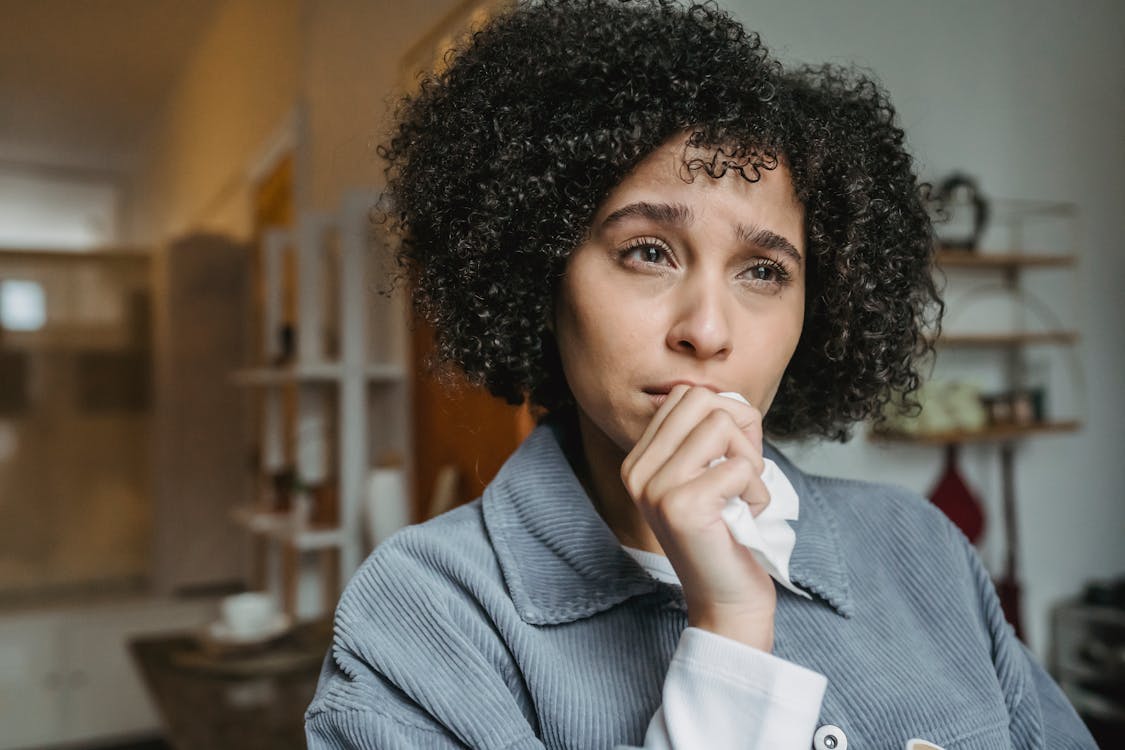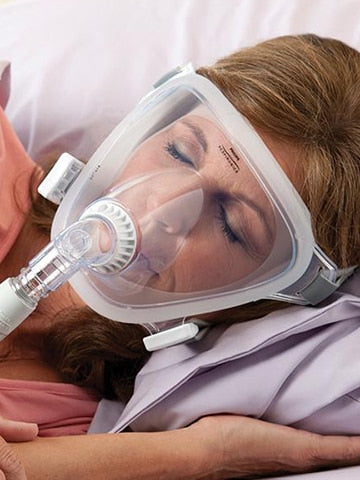Sleep apnea is a common sleep disorder that causes temporary breathing disruptions, resulting in the body waking itself up to restart the breathing process. Repeated dozens of times per hour, sleep apnea incidents can prevent deep sleep and leave you feeling completely exhausted the next day.
It is also extremely overlooked in women.
A big part of this is because men have long been found to have a greater risk for obstructive sleep apnea than women. As a result, it’s estimated that 90 percent of women with sleep apnea don’t know they have it — even though nearly one in five suffer from the condition.
With long-term complications that include depression and anxiety, heart disease, diabetes, memory problems, and even early birth and low birth weight during pregnancy, it is essential that women receive an accurate diagnosis and treatment for this sleep disorder.
Here’s what you should know.
Obstructive Sleep Apnea Risk Factors For Women

As the Sleep Foundation explains, a big part of why women are typically less likely to develop obstructive sleep apnea than men is because of their hormones. Estrogen and progesterone have been found to reduce the risk of developing sleep apnea. However, this means that conditions that disrupt hormone levels can subsequently increase the risk for this sleep disorder in women.
This is especially true of conditions that lower estrogen levels, such as polycystic ovary syndrome (PCOS) and menopause. In menopause, the drop in estrogen levels can actually double the risk of developing sleep apnea.
Many women also experience sleep apnea during pregnancy due to the physical and hormonal changes that take place during this period. While pregnancy-related sleep apnea often resolves itself after the end of a pregnancy, this isn’t always the case.
Aside from these hormone-related concerns, women share many of the same risk factors for developing obstructive sleep apnea with men. Being overweight or obese, having large tonsils or tongue, and a neck circumference 16 inches or larger are common physical factors that can increase your risk. Certain activities, such as drinking alcoholic beverages or taking sedatives before bed, can also increase your risk. And if you have a family history of sleep apnea, you are also more likely to get it yourself.
Common Symptoms of Obstructive Sleep Apnea
Being aware of the risk factors for sleep apnea is one thing — but then there are the observable symptoms that can have a direct impact on your quality of life.
Many of these symptoms only occur at night, and often go unnoticed by the sleeper, even if they are waking up dozens of times per hour. A bed partner or roommate will usually be the one to notice common symptoms like loud snoring broken up by choking or gasping for breath, or temporary pauses in breathing.
Nighttime heartburn, restless sleep, and frequently waking up to go to the bathroom could also be linked to sleep apnea or another sleep disorder. Notably, women with obstructive sleep apnea also have an increased risk for restless legs syndrome, which further disrupts sleep.
Sleep apnea symptoms also manifest during the day — typically as a result of the poor sleep from the night before. Women with untreated sleep apnea often experience extreme fatigue. You may not have enough energy for normal activities, and be more likely to fall asleep while working or driving. A lack of sleep can also make you more anxious or irritable, while also having memory issues and trouble concentrating. Morning headaches and increased pain sensitivity may also occur.
Interestingly, the hormonal changes that are part of the menstrual cycle can also cause sleep apnea symptoms to worsen or improve at different stages of the cycle. If you’ve experienced such symptoms, it’s well worth consulting with a doctor to see if you have sleep apnea.
Getting Proper Treatment

When you meet with your doctor, they will typically go over your symptoms and risk factors to determine if you should do a full sleep study with a sleep specialist. During a sleep study, your breathing, heart rate, and more will be monitored during sleep to determine whether you have sleep apnea or another sleep disorder.
If you are diagnosed with sleep apnea, the sleep specialist will usually prescribe a CPAP machine, which delivers pressurized air through a mask to keep your airways from collapsing at night. The air pressure level is determined by the severity of your sleep apnea. A sleep specialist can also help you figure out the right mask for CPAP therapy based on your face shape, breathing, and sleep position.
Notably, the last few years have seen the introduction of sleep apnea products that specifically cater to the needs of women. This includes masks with better sizing and CPAP machines with adjusted treatment algorithms that cater to female breathing. With this level of treatment, women have a better way to manage their condition.
Choose Help Medical Supplies For Essential CPAP Support
Diagnosing sleep apnea and prescribing CPAP therapy is one thing. Actually getting that equipment can be quite another — especially if you don’t have health insurance. This is where Help Medical Supplies comes in.
At Help Medical Supplies, we offer a wide range of CPAP products designed specifically for women, including CPAP machines and masks. Just as important, these products are available at significantly discounted prices off of MSRP, helping you save money on this essential medical equipment. With free shipping available on orders of $99 and more and available financing on select orders, getting the care you need to manage obstructive sleep apnea has never been more doable.

